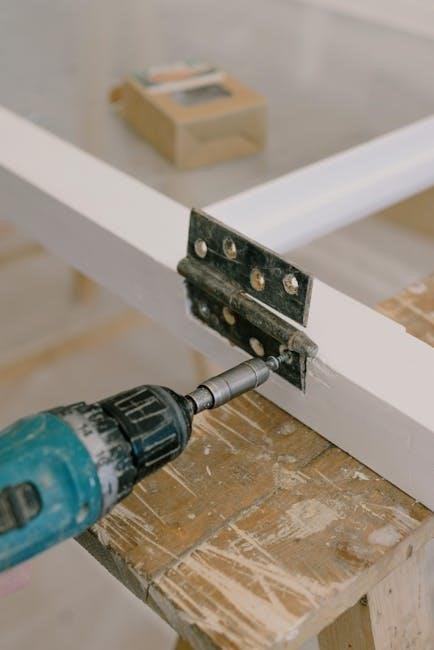Dealing with a malfunctioning power window can be frustrating, especially when you need to close it quickly. Luckily, it’s often possible to manually raise the window until you can get it properly repaired. This involves accessing the window mechanism inside the door panel to push the glass up.
Safety Precautions
Before attempting to manually roll up a power window, it’s crucial to prioritize your safety. Disconnect the car battery to prevent any accidental electrical shocks or unexpected activation of the power window motor. This simple step can significantly reduce the risk of injury during the process.
When working with tools and accessing the inner mechanisms of the door, wear appropriate safety glasses and gloves. This will protect your eyes from debris and your hands from sharp edges or potential hazards within the door panel. Be mindful of any exposed wires or components, and avoid touching them directly unless you’re certain they are disconnected from the power source.
If you’re working on the roadside or in a potentially hazardous environment, ensure your vehicle is parked in a safe location, away from traffic. Use hazard lights to increase visibility and alert other drivers to your presence. If possible, have someone assist you to watch for oncoming traffic and provide additional support.
Remember, patience is key. Avoid rushing the process, as this can lead to mistakes or injuries. Take your time to carefully assess the situation and follow each step methodically. If you’re unsure about any part of the process, consult a professional mechanic for assistance;

Tools and Materials Needed
Before you begin attempting to manually roll up your power window, it’s essential to gather the necessary tools and materials. Having everything on hand will streamline the process and prevent unnecessary delays. A basic set of tools is crucial for safely removing the door panel and accessing the window mechanism.
You’ll need a screwdriver set, including both Phillips head and flathead screwdrivers, to remove screws and fasteners holding the door panel in place. A panel removal tool or a putty knife can be helpful for gently prying the door panel away from the door frame without causing damage. A socket set may also be required to remove any bolts securing the door panel or window regulator.
For securing the window in the up position, duct tape is a versatile and readily available option. You might also consider having zip ties or wedges on hand for a more secure or adjustable solution. A flashlight or work light will be invaluable for illuminating the work area inside the door panel, especially in dimly lit conditions.
Finally, don’t forget safety glasses and gloves to protect your eyes and hands during the process.
Removing the Door Panel
Gaining access to the power window mechanism requires carefully removing the door panel. This process varies slightly depending on the vehicle make and model, but the general steps remain consistent. Start by locating and removing any screws or bolts securing the door panel. These are often hidden behind plastic covers or in armrests and door handles. Use the appropriate screwdriver or socket to remove them.

Once the visible fasteners are removed, use a panel removal tool or a flathead screwdriver wrapped in a cloth to gently pry the door panel away from the door frame. Work your way around the perimeter of the panel, releasing the retaining clips that hold it in place. Be careful not to apply excessive force, as this can damage the panel or the clips.
After all the clips are released, lift the door panel upward and away from the door frame. You may need to disconnect any electrical connectors attached to the door panel, such as those for the power windows, door locks, and speakers. Carefully detach these connectors by pressing on their release tabs. With all connections disconnected, the door panel should now be completely free from the door.
Set the door panel aside in a safe place to avoid scratching or damaging it.
Disconnecting the Window from the Motor/Regulator
After removing the door panel, the next step is to disconnect the window glass from the power window motor or regulator. This allows you to manually slide the window up and down without resistance from the faulty mechanism. Locate the point where the window glass is attached to the regulator assembly. This usually involves clamps or fasteners securing the glass to a sliding bracket or arm.
Depending on the design, you may need to loosen or remove these fasteners to release the glass. Be careful not to drop the window glass once it’s detached, as it can easily break. If the fasteners are difficult to access, you might need to carefully maneuver the window glass or the regulator assembly to create more space.
In some cases, the window glass may be glued to the regulator. If this is the case, you may need to use a specialized adhesive remover or carefully pry the glass away from the regulator using a flat, non-marring tool. Exercise extreme caution when prying to avoid damaging the glass.
Once the window glass is fully disconnected from the motor or regulator, you should be able to freely slide it up and down within the door frame.
Manually Sliding the Window Up
With the window disconnected from the motor and regulator, you can now manually slide the glass upwards. Carefully grasp the bottom edge of the window glass with both hands, ensuring a firm and even grip. Gently push the window upwards, guiding it along the tracks within the door frame. Avoid using excessive force, as this could damage the glass or the window tracks.
If you encounter any resistance, inspect the tracks for obstructions or debris. You may need to gently wiggle the window or apply a silicone-based lubricant to the tracks to ease the movement. Ensure the window is aligned properly within the frame as you raise it. Misalignment can cause binding and make it difficult to slide the window up smoothly.
Continue pushing the window upwards until it reaches the fully closed position. Make sure the top edge of the window seals properly against the weather stripping along the top of the door frame. This will help prevent water leaks and wind noise. Once the window is fully closed, you’ll need to secure it in place to prevent it from sliding back down.
Securing the Window in the Up Position
Once the window is manually slid into the fully closed position, securing it is crucial to prevent it from sliding back down, especially in inclement weather. Several methods can be employed for this purpose, depending on the available materials and the urgency of the situation.
One common approach involves using wedges or shims to hold the window in place. Small pieces of wood, plastic, or even tightly rolled cardboard can be inserted between the bottom edge of the glass and the door frame. Ensure the wedges are firmly in place and provide sufficient support to prevent slippage. For added security, use multiple wedges spaced evenly along the bottom edge of the window.
Another effective method involves using clamps to secure the window to the door frame. Spring clamps or small C-clamps can be attached to the top edge of the window, clamping it against the metal frame of the door. Protect the glass from direct contact with the clamp jaws by using padding, such as cloth or rubber, to prevent cracking or shattering. Make sure the clamps are tightened securely but not excessively.
Using Duct Tape for Temporary Fix

When faced with a power window stuck in the down position, and you’re short on tools or time, duct tape can serve as a surprisingly effective temporary solution. While not a long-term fix, it can provide immediate protection from the elements and deter theft until a proper repair can be made. The key is to apply the tape correctly to ensure a secure hold.
Start by cleaning the surfaces where the tape will be applied. Use a clean cloth to wipe away any dirt, moisture, or grease from both the window glass and the surrounding door frame. This will help the tape adhere better and prevent it from peeling off prematurely. Cut several strips of duct tape, each long enough to span the gap between the window and the door frame with a generous overlap on both sides.
Apply the first strip of tape along the top edge of the window, pressing it firmly onto the glass and the door frame. Overlap each subsequent strip of tape slightly, creating a continuous seal along the entire window perimeter. For added strength, apply a second layer of tape over the first, reinforcing the bond and preventing the tape from tearing. Remember, this is a temporary fix, so replace with permanent solutions soon!
Reconnecting Power Temporarily
If you suspect the power window motor or switch is the issue, and you’ve managed to manually slide the window up, temporarily reconnecting power can help you secure it. This method is useful for confirming the problem’s source and potentially raising the window fully, provided the motor isn’t completely dead.
Begin by carefully reattaching the electrical connector to the power window motor. Ensure the connection is secure to prevent sparking or damage. Next, turn the ignition to the “ON” or “Accessory” position. This will restore power to the window circuit. Test the window switch to see if the motor responds. If the window moves even slightly, use short bursts to inch it upwards until it’s fully closed.
If the window only moves downwards, disconnect the power immediately to avoid lowering it further. In some cases, a faulty switch might be sending power in the wrong direction. If the window responds and closes fully, avoid using it until you can properly diagnose and repair the underlying issue. This temporary power reconnection is solely for securing the window, not for regular use. Remember safety precautions and be mindful of potential electrical issues.
Tapping the Motor (If Accessible)
Sometimes, a power window motor might stall due to a dead spot or internal obstruction. A gentle tap can sometimes dislodge the obstruction and restore functionality, allowing you to raise the window. This method works best if you can access the motor directly after removing the door panel.
Once the door panel is off, locate the power window motor. Using a light hammer or the handle of a screwdriver, gently tap the motor casing while someone else presses the window switch in the “up” direction. Be careful not to hit the motor too hard, as this could cause further damage.
The vibrations from the tapping might be enough to overcome the motor’s internal resistance and allow it to move. If the window starts to move, continue tapping intermittently while the switch is engaged until the window is fully closed. This is a temporary fix and indicates the motor is likely failing. If the motor doesn’t respond to tapping, it may be completely dead and require replacement. Remember to exercise caution and avoid hitting any other components within the door.

When to Consult a Professional
While attempting to manually roll up a power window can provide a temporary solution, certain situations warrant the expertise of a qualified automotive technician. If you’re uncomfortable disassembling the door panel or lack the necessary tools, it’s best to seek professional assistance.
Furthermore, if you encounter significant resistance while trying to manually raise the window, forcing it could cause damage to the window regulator or glass. Similarly, if you suspect an electrical short or wiring issue, attempting to diagnose and repair it yourself can be dangerous. A professional can accurately diagnose the problem, whether it’s a faulty motor, regulator, or wiring issue, and perform the necessary repairs safely and effectively.
Additionally, if you’ve tried temporary fixes like duct tape or tapping the motor, and the window continues to malfunction, it’s a clear sign that a more comprehensive repair is needed. Consulting a professional ensures the problem is resolved correctly, preventing further damage and ensuring the long-term functionality of your power window system. They also have the tools, resources and experience to handle complex problems.
